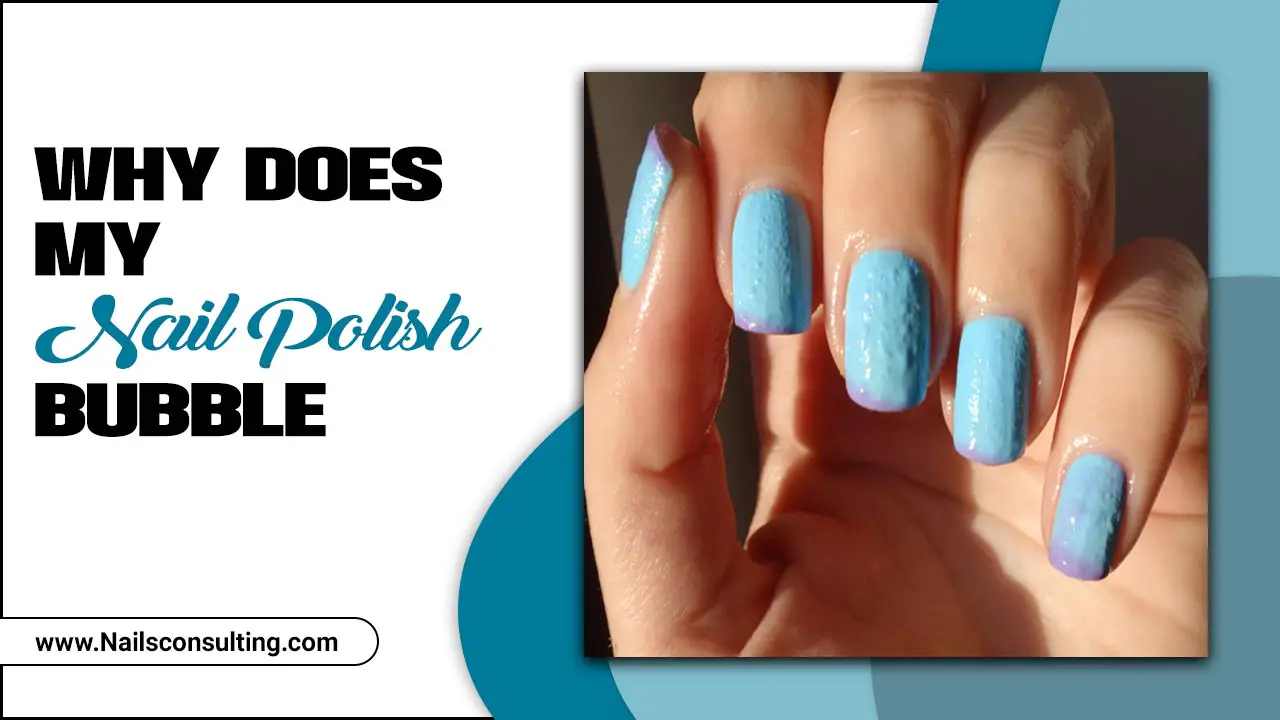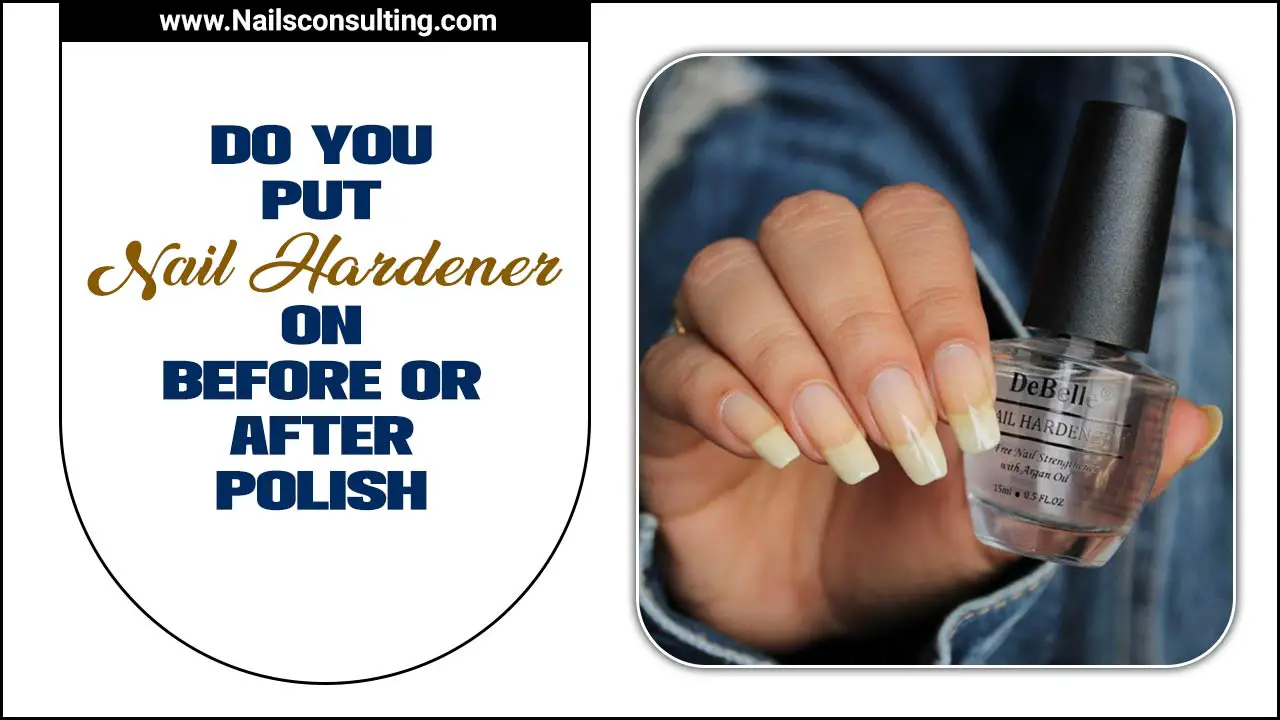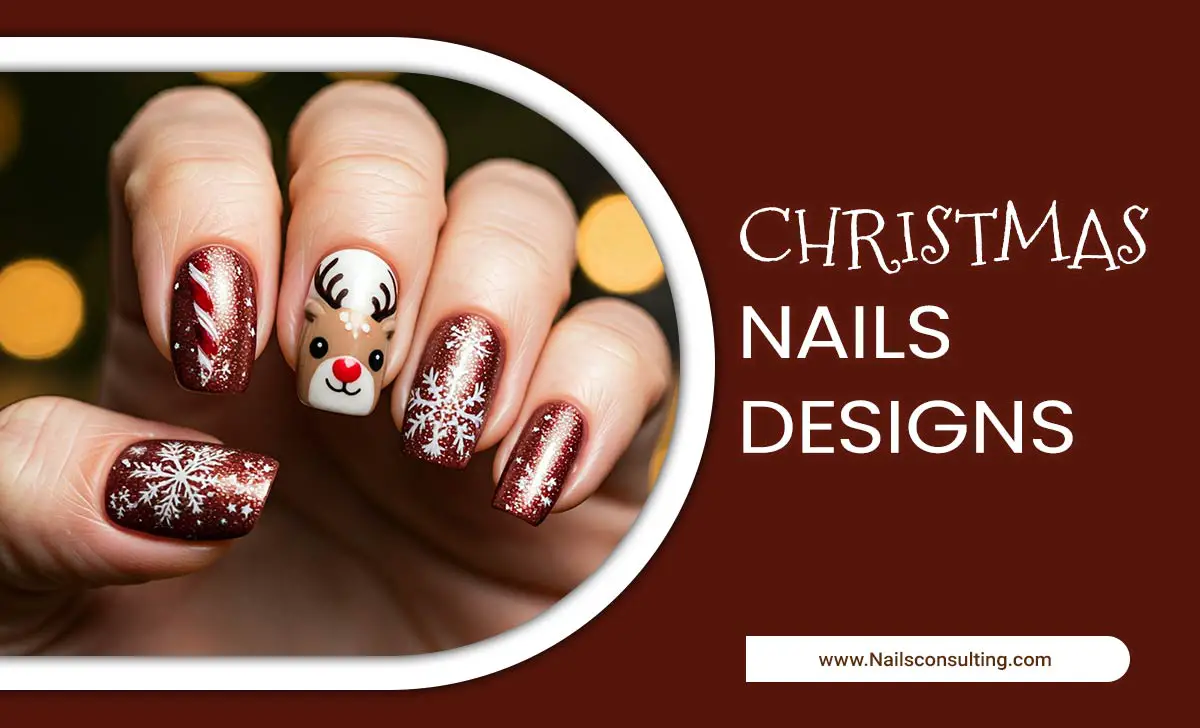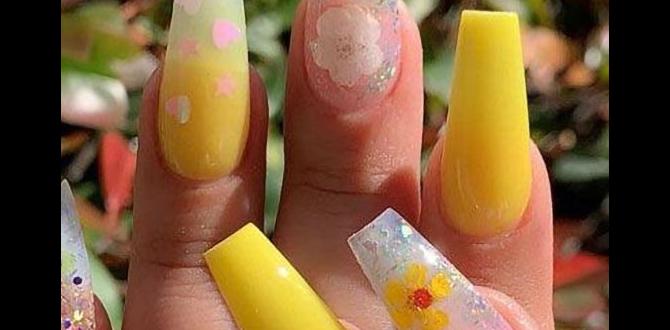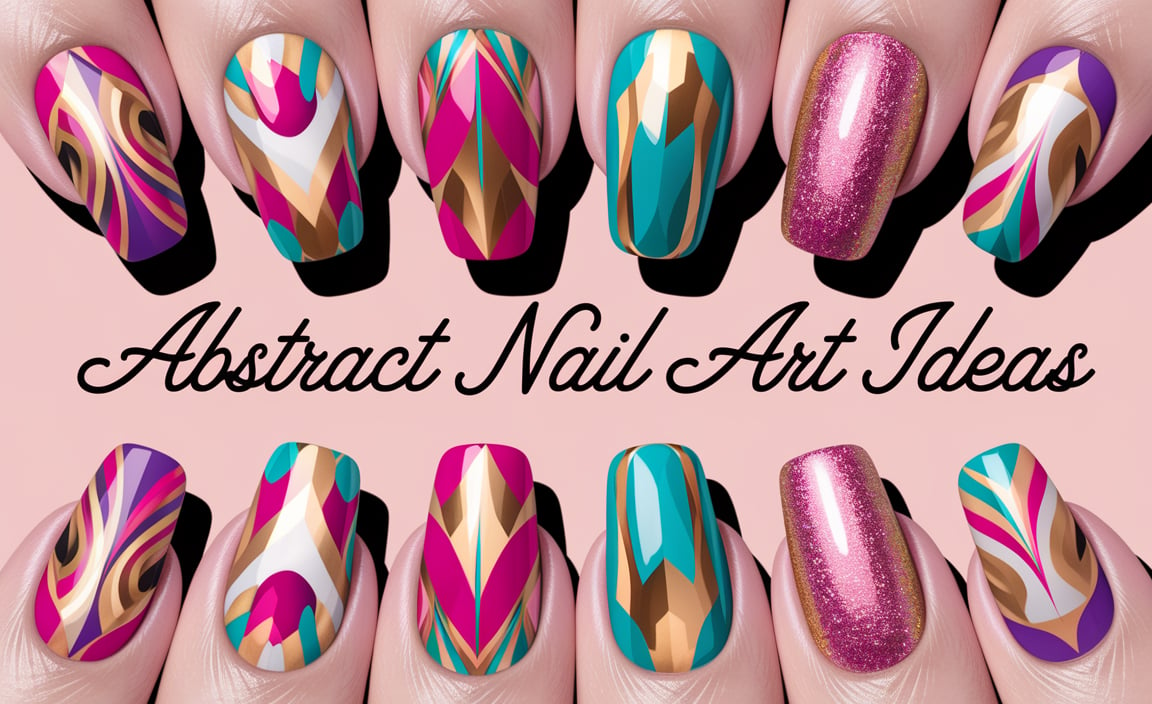Teacher friendly nail designs are practical, beautiful, and totally achievable! We’ll guide you through simple, chic ideas that stay polished and professional, even with busy hands-on work. Get ready to embrace easy elegance for your nails!
Being a teacher means your hands are always in motion—grading papers, interacting with students, and demonstrating concepts. The last thing you need is a nail design that chips, smudges, or looks unprofessional. But who says practicality has to be boring? Absolutely no one! You deserve nails that are as inspiring and capable as you are. Many amazing nail ideas are perfect for the classroom, and they don’t require hours of intricate work. It’s all about smart choices and simple techniques that keep you looking put-together and feeling great.
In this guide, we’ll dive into a world of “teacher friendly nail designs” that are both stylish and super easy to maintain. We’ll cover everything from the best polish types to simple patterns and color palettes that always hit the mark. Get ready to discover your new go-to looks that will have your colleagues and students admiring your nails, without any fuss!
Frequently Asked Questions About Teacher Friendly Nail Designs
What makes a nail design “teacher friendly”?
Teacher friendly nail designs are practical, durable, and appropriate for a school environment. They are typically low-maintenance, resist chipping or peeling easily, and feature subtle or classic aesthetics rather than loud or distracting elements. Think clean lines, muted colors, and simple accents.
Are gel or dip powders better for teachers than regular nail polish?
Yes, gel and dip powders often offer superior durability for teachers. They are more resistant to chipping and wear than traditional nail polish, meaning your manicure can last longer without needing frequent touch-ups. This saves time and reduces the risk of smudges or breaks during a busy school day.
Can I wear nail art as a teacher?
Absolutely! Nail art can be very teacher-friendly if it’s kept subtle and professional. Simple designs like a single accent nail, a delicate stripe, or a minimalist pattern in muted colors are perfect. Avoid overly bold, glittery, or complex designs that might be distracting or perceived as unprofessional in some school settings.
How often should teachers reapply nail polish or get manicures?
With traditional polish, you might need to reapply every few days. For more durable options like gel or dip powder, manicures can last 2-3 weeks, significantly reducing the frequency of upkeep. The best schedule depends on your chosen nail product and how much wear and tear your hands experience.
Are there any specific colors that are considered best for teacher nails?
Neutral tones like nudes, soft pinks, light grays, and muted blues are always safe and professional choices. Classic reds and deep burgundies can also be elegant and appropriate. It’s generally best to avoid neons or overly bright, attention-grabbing colors for everyday wear in a school setting.
How can I make my nail polish last longer, even if I don’t use gel or dip?
To extend the life of regular nail polish, always start with a good base coat, apply thin, even coats of color, and finish with a high-quality top coat. Capping the free edge of your nail (painting a thin line along the tip) with your top coat can prevent chipping. Avoid prolonged exposure to hot water right after polishing.
Can I use press-on nails as a teacher?
Yes, press-on nails can be a great option for teachers looking for a quick, temporary change. Opt for simpler shapes and colors that mimic natural nails or classic manicures. Ensure they are securely applied and trimmed to a practical length to avoid snagging or interfering with tasks.
Choosing the Right Foundation: Polishes & Finishes for Educators
As a teacher, your nails are exposed to a lot, from whiteboard markers to countless rounds of hand washing. The right polish and finish are your first line of defense for a long-lasting, professional look. Let’s explore what works best:
Types of Polish Explained
- Traditional Nail Lacquer: This is your classic polish. It’s widely available, comes in countless colors, and is easy to apply and remove at home. Its main drawback for busy teachers is its susceptibility to chipping. However, with a great top coat and careful application, it can still be a viable option for quick, temporary manicures.
- Gel Polish: Gel polish lasts significantly longer than traditional lacquer, typically 2-3 weeks, and has a high-shine finish that resists chipping and smudging. It requires a UV or LED lamp to cure (harden). While it’s more durable, removing gel polish can be more complex than regular polish, often requiring soaking.
- Dip Powder Nails: Dip powder systems offer incredible durability, often lasting 3-4 weeks. They are applied by dipping the nail into a colored powder after a bonding liquid is brushed on, or by brushing the powder onto the liquid. They are known for being strong and chip-resistant, but removal also typically involves soaking.
- Polygel/Acrylate-Based Products: These are more advanced systems that offer a flexible yet strong nail enhancement. They can be used for overlays or extensions and are very durable. They require specific application techniques and curing with an LED lamp.
- Press-On Nails: These pre-designed nails are applied with adhesive tabs or glue. They offer an instant manicure and can be a fantastic solution for a quick style update. Look for good quality press-ons designed for longevity. Shorter, more natural shapes are often best for a teacher-friendly aesthetic.
Finish Matters: Matte vs. Glossy
The finish of your polish can subtly change its appearance and how it holds up:
- Glossy Finish: This is the classic shiny look. It’s universally flattering and professional. A high-quality glossy top coat can also add an extra layer of protection against chips and nicks.
- Matte Finish: A matte finish offers a sophisticated, velvety look that’s less reflective. It can be achieved with a matte top coat over any nail polish color. Matte finishes can sometimes show wear and tear a bit more visibly than glossy ones, especially around the edges, but they offer a unique elegance.
Durability Comparison for Teacher-Friendly Nails
| Polish Type | Average Wear Time | Chip Resistance | Ease of Application | Ease of Removal | Ideal for Teachers |
|---|---|---|---|---|---|
| Traditional Nail Lacquer | 3-7 days | Moderate | High | High | Occasional touch-ups needed. Good for short-term styles. |
| Gel Polish | 2-3 weeks | Very High | Moderate (requires curing lamp) | Moderate (requires soaking) | Excellent for long-lasting manicures. |
| Dip Powder | 3-4 weeks | Extremely High | Moderate (can be tricky to master) | Moderate (requires soaking) | Top tier for durability and longevity. |
| Press-On Nails | Varies (1-7 days with glue, longer with professional application) | Varies | High (instant application) | High (with proper technique) | Great for quick, temporary style changes. |
Color Palettes: Sophistication & Simplicity
Choosing the right colors can make all the difference in creating a teacher-friendly look. The goal is elegance and professionalism that complements your attire without being distracting. Think timeless, versatile hues.
The Neutral Non-Negotiables
Neutrals are the backbone of any sophisticated wardrobe, and they translate beautifully to nails. They pair well with almost any outfit and maintain a polished appearance:
- Nudes & Beiges: From pale sandy tones to deeper caramel hues, nudes offer a ‘your nails but better’ look. They elongate fingers and are incredibly chic.
- Soft Pinks: Think ballet slipper pink or a delicate, muted rose. These are universally flattering and add a touch of femininity without being overpowering.
- Light Grays: A sophisticated alternative to black, light gray offers a modern and professional feel. It’s a cool-toned neutral that looks sharp.
- Creamy Whites/Off-Whites: A chic, clean look that’s softer than pure white. These are perfect for a crisp, polished appearance.
Classic Shades That Always Work
Beyond neutrals, there are classic colors that are appropriate for almost any setting:
- Classic Red: A true red can be incredibly powerful and professional. Opt for a sophisticated, not too bright, shade.
- Deep Burgundy/Wine: These rich, darker shades are elegant, especially during fall and winter. They offer a bolder statement while remaining refined.
- Muted Blues: Think dusty blues, slate blues, or a soft cerulean. These can be refreshing and calming, offering a break from traditional neutrals.
- Soft Greens: Sage green, olive green, or a muted mint can be surprisingly sophisticated and work beautifully for a natural, calm vibe.
Avoiding Distractions in Color Choice
While personal style should always be celebrated, in a professional teaching environment, it’s often best to steer clear of:
- Neon colors
- Extremely bright, vibrant shades (like electric yellow, hot pink, or lime green)
- Heavy glitter bombs (unless it’s a very discreet accent)
- Grandiose patterns that can be visually overwhelming
The aim is to look polished and put-together, allowing your professional demeanor to shine.
Genius Teacher-Friendly Nail Design Ideas
Now for the fun part! These designs are simple to execute, durable, and perfectly suited for a classroom setting. They offer a stylish edge without compromising professionalism.
1. The Minimalist Masterpiece
This is about understated elegance. Think clean lines and subtle details.
- Single Stripe Accent: On one or two nails (usually the ring finger), paint a thin, vertical or horizontal line in a contrasting or complementary color. A silver line on a nude nail, or a thin black line on a gray polish, looks incredibly chic.
- Tiny Dot Detail: A single, small dot in a metallic finish (gold, silver, rose gold) placed at the base of the nail or on the side of one nail is a subtle yet stylish touch.
- Negative Space Designs: Leaving a small section of the natural nail visible can create a modern, artistic look that’s also easy to maintain as it grows out. Think geometric shapes with clear sections.
2. Elegant Ombré
Ombré, or gradient, nails create a seamless blend between two colors. For teachers, opt for subtle transitions.
- Two-Tone Neutral Blend: Blend a light nude into a slightly deeper beige, or a soft pink into a creamy white.
- Subtle Color Transition: A gradient from a muted blue to a pale gray, or a soft sage green into a creamy white.
- How to: Use a makeup sponge to gently dab and blend the colors onto the nail. Start with one color, then dab the second color lightly over the tip, blending the edges. Finish with a shiny top coat.
3. The Modern French Twist
The classic French manicure gets a contemporary update, perfect for busy professionals.
- Colored Tips: Instead of white, use a soft pastel, a muted jewel tone (like deep blue or emerald), or even a sophisticated metallic for the tip.
- Thin Micro-French: Paint just a very thin line on the very edge of the nail. This looks incredibly refined and is less prone to chipping than a thick band.
- Reverse French (Moon Manicure): Instead of highlighting the tip, highlight the cuticle area with a different color or finish. A metallic half-moon at the base of a nude nail is stunning.
4. Solid Sophistication with a Twist
Sometimes, a single, perfect color is all you need. But you can elevate it!
- Single Accent Nail: Paint all nails in a solid, elegant color (like a deep berry or a classic nude), and choose one nail (usually the ring finger) to have a subtle accent. This could be a different, though complementary, color, a simple metallic shade, or a tiny design like a dot or stripe.
- Textured Top Coat: Use a matte top coat for a velvety finish, or a subtle glitter top coat (applied lightly over a solid color) for a hint of sparkle that isn’t overpowering.
5. Geometric Gems
Clean lines and shapes are inherently polished and professional.
- Half-and-Half: Divide each nail diagonally with two complementary or contrasting colors.
- Blocked Out: Use tape to create clean squares or rectangles of color on one or two nails.
- Simple Lines: Use a thin brush or striping tape to create a few parallel lines across the nail.
6. Subtle Shimmer
A touch of shimmer can add depth and interest without being too bold.
- Sheer Shimmer Polishes: These polishes have a sheer base with fine, iridescent shimmer particles. They add a subtle glow and are very forgiving.
- Glitter Top Coat over Solid: Apply a single, thin coat of a fine holographic or silver glitter top coat over a solid color. This dresses up the solid color beautifully.
- Metallic Accents: As mentioned in other designs, small metallic details are a wonderful way to add polish.
Essential Tools for Effortless Teacher Nails
You don’t need a professional salon setup to achieve fantastic teacher-friendly nail designs. A few key tools can make a world of difference in achieving a clean, polished look at home.
- High-Quality Nail File: A good file (glass or fine-grit emery board) is crucial for shaping nails cleanly without causing splits or breakage. Aim for a grit around 240 for natural nails. Organizations like the American Academy of Dermatology offer advice on nail care, including proper filing techniques.
- Nail Buffer: A multi-step buffer can add shine, smooth ridges, and prepare your nail for polish, making the final look much smoother and more professional.
- Base Coat: This is non-negotiable! A good base coat protects your nails from staining and provides a smooth canvas for polish, helping it adhere better and last longer.
- Top Coat: Your best friend for durability. Look for ‘quick-dry,’ ‘long-lasting,’ or ‘gel-like’ finish top coats.
- Cuticle Pusher & Nippers: Gently pushing back cuticles (never cutting them unless you are experienced, as it can lead to infection) can make your nails appear longer and cleaner. Use nippers only for stray hangnails.
- Thin Nail Art Brush or Dotting Tool: Even a toothpick can work in a pinch! These are invaluable for creating simple lines, dots, and other minimalist designs.
- Nail Polish Remover & Cotton Pads: For easy cleanup and corrections. Ensure you have an acetone-free remover if you have gel or acrylics.
- Cuticle Oil: Keeping your cuticles hydrated prevents dryness and hangnails, which detract from an otherwise perfect manicure.
Step-by-Step: Simple Striped Accent Nail
Let’s walk through one of the easiest yet most stylish teacher-friendly designs: the single striped accent nail. This looks incredibly chic and polished.
Materials Needed:
- Your chosen base color polish
- A contrasting or complementary accent color polish
- Base Coat
- Top Coat (preferably quick-dry)
- A thin nail art brush OR a striping tape
- Nail polish remover and cotton swabs for clean-up
Instructions:
- Prep Your Nails: Ensure your nails are clean, dry, and free of any old polish. Shape them with your nail file and gently push back your cuticles.
- Apply Base Coat: Apply one thin layer of your base coat and let it dry completely. This is essential for protecting your nails and helping the color adhere.
- Apply Base Color: Apply

